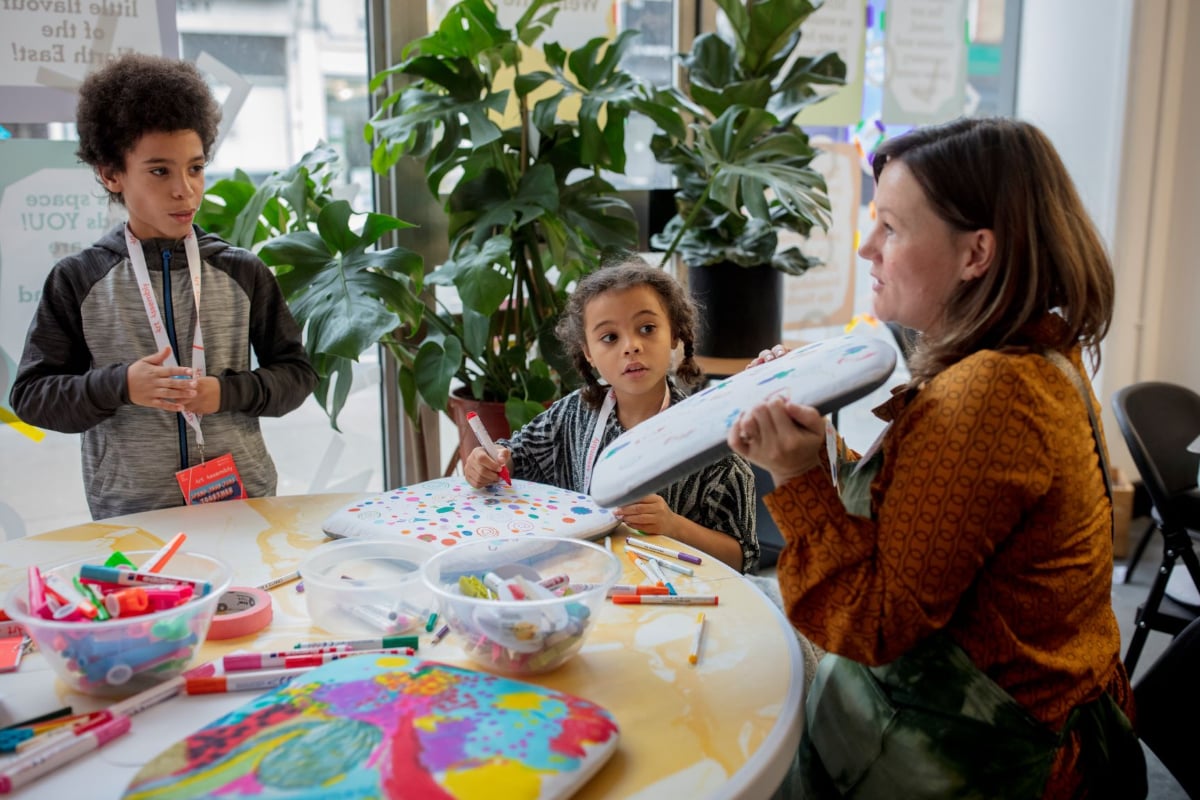
Art Assembly 2019, Walthamstow
Photo: David Levene
What do teachers want from museums?
A new report provides insights into what teachers need to help them use museums and galleries more in their practice, for the benefit of themselves and their pupils, as Sam Cairns writes.
At Art Fund, we want all young people to have the chance to enjoy museums and galleries as places of learning, inspiration, fun and exchange. Not every child in the UK gets that chance.
Teachers are highly influential in the lives of pupils everywhere. So, with the support of the Clore Duffield Foundation, during the 2021-22 school year – the Teacher Art Pass Research and Development year (TAP) – we worked with teachers to find out what support they needed to be able to increase their use of museums as resources in their teaching.
What insights did we find? What more could be done to support teachers’ use of museums and galleries within their teaching? Would Art Pass membership increase their engagement with museums and galleries overall?
The short answer is yes. Giving teachers more access via Teacher Art Pass membership resulted in them using museums more: 89% agreed that the Pass increased their desire to visit or digitally engage with museums, and 85% found the benefits useful to their teaching practice. Across all surveys and focus groups, it was clear that teachers want to use museums.
We know that school visits to museums, galleries and historic sites are lower than they were pre-pandemic, and the TAP findings back this up. 80% of primary teachers said they took groups on visits pre-pandemic, compared to 73% since the pandemic.
How do we reconcile this drop in visits with the enthusiasm and desire we heard from teachers to use cultural organisations in their teaching?
Barriers to school museum visits
Aside from pandemic restrictions, the problem is down to the barriers teachers face in terms of cost and time. The cost of transport to get pupils to museums is frequently prohibitive. Being able to walk to a museum makes a big difference in how likely it is that a teacher gets approval for a visit. Likewise, time to plan and organise a visit is a big barrier.
One teacher told us: “I am 30 mins away from TATE Britain but going on a free gallery trip takes up to six hours to plan – sending letters home and chasing permission slips, permission from management, risk assessment, collecting health information, cancelling school dinners, checking students have travel passes and packed lunches and so on. I have one and a half hours a week planning time for all my classes.”
Giving teachers information they need
Museums don’t have control over teachers’ planning time or transport costs, but what they can control is how they provide them with information. Teachers need to be able to find museums online quickly (half do a Google search for museums to visit) and then once on the site, they need to be able to find information for schools quickly.
This is the kind of information the TAP teachers told us they were looking for:
– Areas of the curriculum your museum supports
– Cost of visits, including any workshops or tours you offer
– Instructions on how to book a school group visit
– Contact information for the museum education team
– Pro forma risk assessments
– Recommended length of trip or size of exhibition
– Facilities – such as lunchroom, toilets, café and access
Communication channels
In our TAP surveys, email newsletters were highest ranked means for museums to communicate with teachers, with 72% saying they used them. The next most used medium was social media on 54%. Facebook teacher groups were also a useful communication channel, with half of TAP teachers belonging to one.
If you can, build a teacher community or network first and then communicate with them. They will then proactively read what you send.
The Great Escape
TAP has demonstrated that giving teachers more access to museums increases their use of museums in their teaching and their pupils’ access. Art Fund has taken what we learnt from running the Teacher Art Pass R&D year and applied it to our new project.
The Great Escape is a mass participation project across the UK, creatively responding to art, climate change and biodiversity loss on an unprecedented scale, leading up to Earth Day 2023.
The Great Escape will embed the TAP research about how to communicate with teachers in the guidance and resources. It will provide grants for museums across all four nations to run projects so learning colleagues can implement the lessons we learnt from TAP.
Art Fund also has plans to develop the Teacher Art Pass to build a community of teachers so we can better share information and increase children’s access to the UKs museums, galleries and historic houses.
Sam Cairns is Director of Sam Cairns Associates.
![]() @artfund
@artfund
Read about the Teacher Art Pass project and download the Teacher Insights report.
Register your interest in The Great Escape.
This article, sponsored and contributed by Art Fund, is part of a series sharing information and expertise to support museums and galleries to recover from the pandemic and develop audiences for the future.

Join the Discussion
You must be logged in to post a comment.